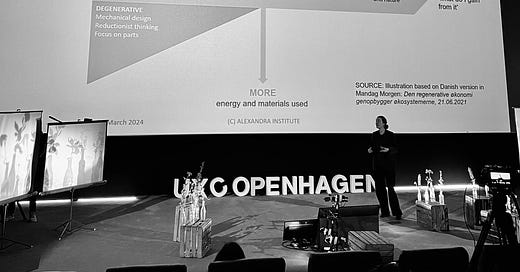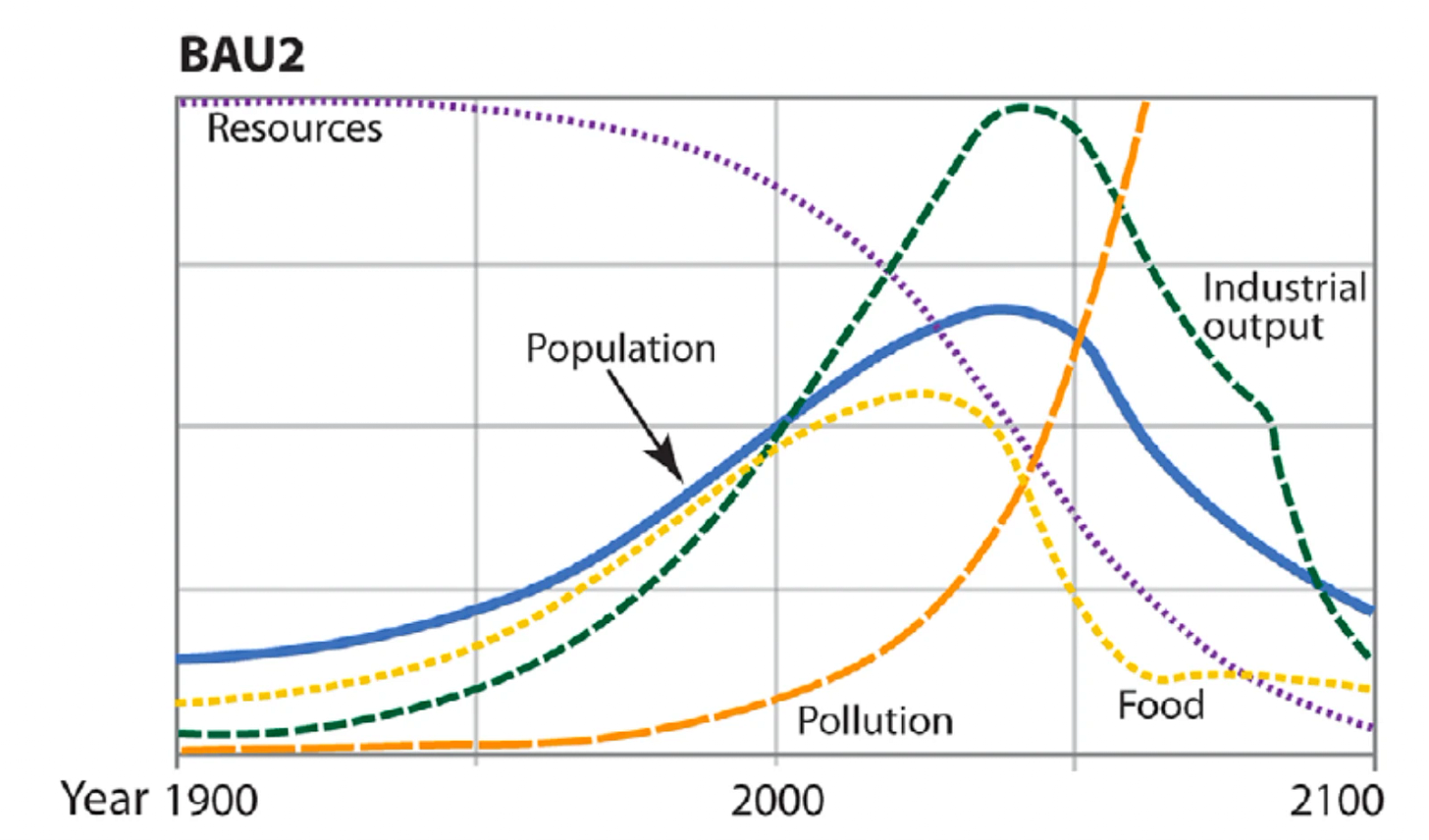Design like a growth hacker
Growth hacking neglects the fundamental discussion of what is enough growth? If you are unfamiliar with growth, check out my growth primer article.
Join my event this Saturday April 6th to learn about growth design, the growth loop, case studies, ethical growth, and how to integrate this into your work immediately. We’ll be joined by guest speaker from Miro, Elvis Obanya. (This will be a primer for my Sustainable Growth course coming out in May.)
When most people talk about growth, what they omit is why are we trying to grow, what growth is enough, is this the right measurement, and how do we grow sustainably.
There are a few new methods for design gaining popularity that I’d like to introduce you to. Think regenerative, circular, sustainable, nature-based, and so forth. I believe these need to be integrated into how we design similar to ethics and accessibility, which are now widely accepted.
Discovering Degrowth
In March, I went to UX Copenhagen and the theme was degrowth and consumerism. This is the first time I heard the term “degrowth.” It was a lovely conference and so nice to be surrounded by like minded designers who want better for people and the environment. That being said, the people who are already in support of this are not the challenge here. We are essentially an echo chamber for each other. There are designers at companies, most companies, I would say, who have CEOs, board members, investors, and so forth who prioritize growth year over year.
The mindset is, if you’re not growing, you’re failing.
So what does an alternative look like?
An introduction to degrowth
“Degrowth…” I thought to myself… “what are the chances that’s going to sell people?” Don’t get me wrong. I’m in full support of limits to growth. Normally, I’m one to say titles and naming don’t matter. However, I know there are business leaders who will not jump on board so easily. Especially using that word. 👀
Growth in itself is not bad. We all need to grow and so do businesses. It’s rather, the way we’ve been growing that needs to be checked. ✔️ We need intentional growth with a clear purpose. When you’re trying to communicate for alignment, words matter. Such an intense topic requires deeper discussion and careful labelling.
Using forceful language or shoving views in people’s faces is definitely not going to win hearts and minds. In my own experience, the best way to grow a movement is to tell people how it benefits them. It’s like design. We are not the user. That’s why in this case I’m an advocate for a different naming convention.
Growth with no guardrails
So what’s wrong with growth? I recently had a guest on the podcast, Gabriella Lucia Lorenz, who made a statement that stuck out to me.
💡 Things in nature that grow unchecked are bad. They wreak havoc on the ecosystem.
Nature regulates populations through various mechanisms to maintain ecological balance such as predators, competition for resources, diseases, natural disasters and so forth. Growth unchecked could result in resource depletion, habitat destruction, conflict, diseases, and the collapse of ecosystems.
The concern with growth is that we exceed planetary boundaries that result in the global collapse of society. Keep reading because I’m going to tell you what the alternative is. 👇🏽
Tell me about degrowth
The argument for growth on a global scale is often lifting people out of poverty but environmental researcher Gaya Herrington argues the track record is not that great.
Degrowth proposes reducing the size of the global economy to pursue sustainability and equality.
It is a critique of blind and endless growth.1 Essentially there was this thing called “green growth,” which hoped that technology would help us decouple emissions and resource use from economic growth. This has not happened. Not enough anyways, as you can see below with the continued climate disasters.

We need to be a lot more intentional when we’re dealing with the risk of global collapse. Decentering economic growth would allow us to manage the shift while not affecting our welfare. If we continue with our usual ways, we will have a forced decline in welfare around 2040.
According to Herrington,
A decade from now we will see a halt in economic growth. Period.
In a study, “Herrington focused on two scenarios using a range of variables, or markers, including population, fertility rates, mortality rates, industrial output, food production, services, non-renewable resources, persistent pollution, human welfare, and ecological footprint.
Under one, termed business as usual…growth would stall and combine with population collapse. The other, termed comprehensive technology , modeled stalled economic growth without social collapse. Both scenarios “show a halt in growth within a decade or so from now,” the study says, adding, that “pursuing continuous growth, is not possible.”2
What is the solution?
The answer is sustainable growth or A-growth.
Keep reading with a 7-day free trial
Subscribe to Conscious Tech to keep reading this post and get 7 days of free access to the full post archives.







